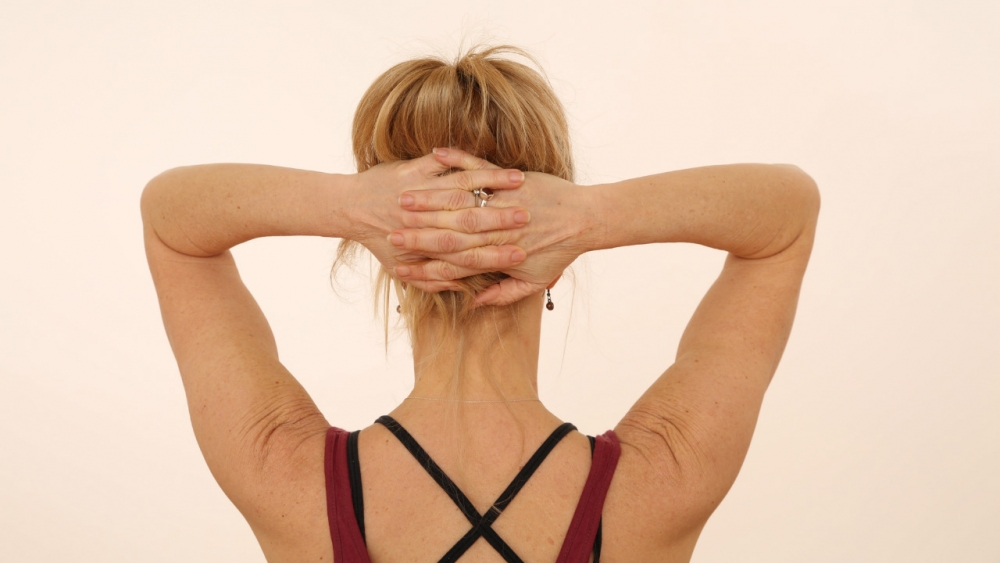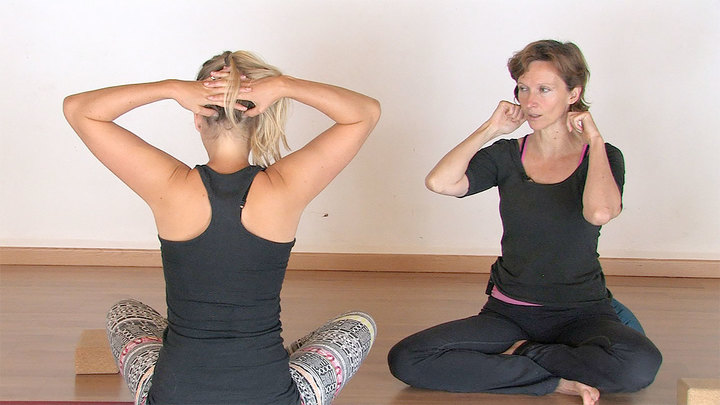Did you know that your neck has the same number (seven) of vertebrae as a giraffe’s?
These seven vertebrae make it possible for our neck to move in a lot of different directions. Check it yourself: you can do a lot with your neck – not as much as an owl because we don’t have an S-shaped neck but still, we can move the head side-to-side; ear to shoulder; chin to sternum, and look up. The neck is actually the most free-moving part of our body! It also supports a seventh of our total weight, about 10 to 13 pounds.
These facts are important and not just so you can answer pub quiz questions! They help us understand why the neck is such a sensitive area. Chronic neck tension has become a huge problem for many of us, sometimes even leading to constant headaches.
Postural habits and neck pain
Very often, neck problems are related to posture. For instance looking down at your mobile phone or sitting hunched at your desk for hours. This forward head tilt is one of the most common postural misalignments. As your head moves forward out of alignment the muscles on the back and front of the neck have to work harder to stop the chin from dropping to the chest. Think about those 10-13 pounds of your head pulling on the back of your neck all the time!
Forward head tilt also affects the rest of the body. As the head starts to tilt forward the centre of gravity changes and so the upper body drifts backwards. Then, in turn, the hips begin to shift forward to balance this out. You can see this type of postural shape develop as people age.
Sandra Carson addresses this forward head position in her class: Yoga Therapy: neck alignment, the sternocleidomastoid.
Or maybe you like to squeeze your phone between your ear and shoulder while talking so that your hands are free. If you spend many hours on the phone, you should really get a phone headset to avoid getting “telephonitis”. 50% of the people who use the phone for 2 hours a day develop telephonitis (and 31% lower back pains).
Stress and your neck
There is also a link between tensions in the neck area and stress. We often respond to stress by lifting the shoulders to the ears and bending the head forward. You can see this when you look around at people. The way they hold their head (and so the stress put on the neck) depends on their mood.
Some quick tips to save your neck
Make sure you sleep on a firm pillow so your neck doesn’t bend forward or backward or to the left/right if you sleep on your side. Avoid sleeping on the belly too. If you spend a lot of time in front of the computer, place the keyboard and mouse so your elbows are at 90-degree angle and the top of the screen at 3-5 inches below your line of sight.
How Yoga Therapy can help
Yoga can help to relax, stretch and strengthen the muscles of the neck and shoulders. In the class below I go through a series of moves and postures to help you do that. Remember to do these mindfully. No rush. Think about the amazing work done by your neck. Nurture it.
Releasing the neck and shoulders – 20 mins
Tension in the neck and shoulders affect many people and is often due to bad posture and/or stress. In this sequence below, you will first relax, release tension and improve your posture. You will also see how to protect your neck when practising yoga.
Enjoy the class.
Namaste
Véronique


